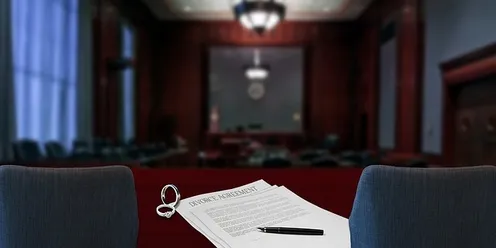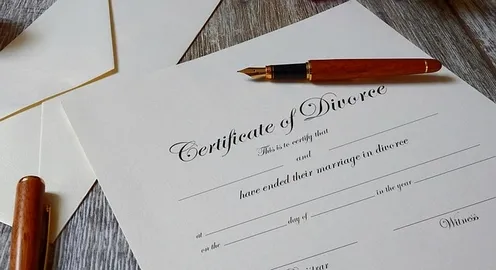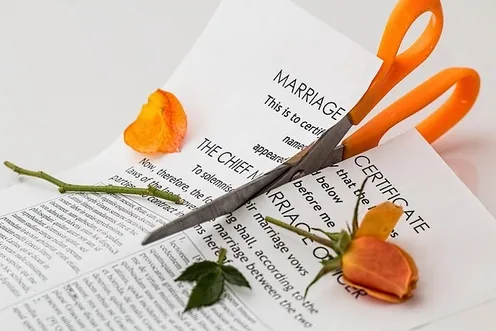Uncontested Divorce Petition Process in New York
by SKU
Published: Apr 23, 2025 | Updated: Apr 23, 2025 |

Sharing is Caring!... Don't Care, Share & Save
Uncontested Divorce Petition Process in New York
Key Takeaways
- Best of all, I can check whether I’m eligible to file an uncontested divorce petition under New York’s residency and eligibility standards.
- Both my spouse and I must agree on all issues like property division, child custody, and support to qualify for an uncontested divorce in New York.
- I don’t want to miss any required NY divorce forms. I plan to triple-check that all my paperwork is filed correctly and in order so there are no unnecessary delays.
- It is highly important that the divorce petition be filed correctly. It helps to make sure my case gets processed without a hitch through the right County Clerk’s Office.
- If my spouse challenges the scenario or fails to answer, I should be prepared for additional measures. This might involve going to mediation or getting a default judgment.
- I don’t just budget in court fees, but other expenses as well. This method allows me to plan my budget accordingly and reduces financial surprises while going through my divorce.
A NY uncontested divorce petition is what we use to file for divorce in New York with both husband and wife in full agreement on every issue. This may include rulings on dividing property and determining custody. This petition in New York indicates that we both are in agreement on important issues.
We don’t argue over the house, the car, child support, visitation, or anything. We fill out most of our forms using official New York State Unified Court System forms. After that, we file everything with the county clerk in our jurisdiction.
An uncontested divorce is much faster. It’ll be less time-consuming and expensive than a contested case. Over the coming days, I’ll chronicle each step in the process. I’ll even walk you through the forms you need, and how it all works from beginning to end.
Are You Eligible in NY?

Learn whether you qualify to begin a New York uncontested divorce petition. Eligibility determines whether your process is smooth and swift or bumpy and delayed. The state creates rigid parameters you have to operate within, and if you step outside of one tiny detail, it can lead to major delays.
In New York, nearly 70% of individuals who get divorced choose an uncontested divorce. They are able to reach consensus much faster and easier regarding their property, child, and financial matters.
Meeting NY Residency Rules
You or your spouse must have been residents of New York for at least one year prior to the filing. If you were married in New York, that will serve to show you have satisfied the residency requirement. If you live here as a married couple, that makes your case even stronger.
Other people are eligible if they have lived here for at least two consecutive years prior to beginning the application process. For instance, if you relocated to Manhattan two years ago, you’re golden. If you currently live in Brooklyn but were married in Queens, you still check the box. Getting this wrong risks your case being dismissed or delayed.
Choosing Your Divorce Grounds
You must have stable legal grounds on which to base your divorce. These days the majority of couples choose “irretrievable breakdown”—the no-fault reason—because your marriage simply isn’t working out, and both parties acknowledge that fact.
Fault options, such as adultery, are available but are not typically used in uncontested matters. Be direct about your grounds in your complaint. In this manner, the court will be clear on your stance and can move your case forward in a timely manner.
Why Eligibility Matters First
Getting eligibility right the first time saves everyone time, money, and a lot of stress. Failing to comply with a rule can have drastic repercussions. Your case could be dismissed or postponed, racking up $3,000-$8,000 in costs and wasting months in court.
Couples who figure out all the particulars ahead of time usually get everything settled in only two to six months. That timeline depends largely on how quickly you file and how busy your county court is.
Reaching Full Agreement is Key

Reaching full agreement on a New York uncontested divorce petition sets a favorable tone for the rest of the process. This results in a more refined and considerably faster process. Your foremost priority should be making a full agreement with your spouse on each key issue.
Determine how to handle properties, debts, children, and spousal support. When you both talk openly, lay out your concerns, and work through expectations, you skip the long court fights that drain time and money. Reaching full agreement means you can bypass the usual pressures of litigation.
It frequently concludes in three to six months rather than after a protracted period measured in years. In New York, nearly all couples who file for an uncontested divorce complete the process more quickly and invest less on legal costs.
What "Uncontested" Really Means
An uncontested divorce in New York State is when both parties agree on all terms, allowing for faster processing through the New York State unified court system. This approach minimizes court fees and reduces the need for legal representation, resulting in a smoother experience compared to contested divorce cases.
Agreeing on Assets and Debts
To start, you each write down every asset and debt in your name. This list makes it an even playing field. Then you divide up the assets and liabilities in a way that makes sense for everyone.
Put it all in writing so no one can later say they didn’t understand.
Settling Child Custody Matters
You and your spouse need to reach consensus on the children’s primary residence. Talk about how pick-ups and drop-offs will be initiated and if/how child support payments will be administered.
With a clear detailed parenting plan in place, each party involved has a clear roadmap moving forward.
Deciding Spousal Support Fairly
Negotiate spousal support considering both your incomes and needs. Deciding spousal support fairly is crucial. Agree on the amount and duration of payments.
Put it all down on paper.
The Risk of Fake Agreements
Don’t speed through or pretend to have these agreements. If what you sign is fake or inequitable, you open yourself up to future battles and even more time in court.
So every agreement should be legitimate and executed in earnest by both of you.
Gathering Your Essential NY Forms
If you’re going through with an uncontested divorce in New York, it’s important to file paperwork properly. Having everything in order really helps the entire process go much more smoothly. Most of it you can get for free and with little hassle.
Getting started on the right foot makes it easy to stay organized and avoid a lot of grief later on.
Identifying Mandatory Divorce Papers
If you’re filing for an uncontested divorce, the state requires several essential divorce papers. This list typically begins with the Maintenance Guidelines Worksheet (UD-8) followed by the Support Collection Unit Information Sheet (UD-8a).
You may find the Summons With Notice or Summons and Complaint, Verified Complaint, and Affidavit of Defendant. If you have children together, you will likely need a Child Support Worksheet.
We know that no two divorces are the same. If you’ve negotiated property or child custody, you may have additional paperwork such as a Settlement Agreement. Completing these correctly, without missing fields or errors, ensures no lengthy waiting periods or denials at the court.
Locating the Official Forms
The official source for finding these forms is the New York State Courts website. They provide all of their forms completely free of charge and are dedicated to keeping them up-to-date.
If you’d prefer to pick them up physically, your local court clerk’s office should have physical copies. Always make sure you’re using the latest version, as regulations evolve.
Understanding the Plaintiff Affidavit
Understanding the Plaintiff Affidavit is crucial. The Plaintiff Affidavit is your opportunity to lay out the facts of your case. This is the form that tells the court your story and supports your request.
You will need to complete it with precision and have it notarized. Otherwise, the court will not accept your submission.
Organizing Your Documentation Smartly
Creating a checklist is a great way to ensure everything stays organized. If there’s a specific list of forms provided by the court, stack them in that order.
Make sure to save copies for your own records—both hard copies and scanned electronic versions. This not only facilitates a smoother and faster filing experience, but in the event that the court does request additional information or clarification.
Completing Your NY Divorce Petition Accurately
When you file for an uncontested divorce in New York, attention to detail and concern for filing the information accurately are key. New York courts are strict about requiring you to check off every box. This means establishing your residency for at least one year in-state, and fully disclosing all pertinent details about your marriage.
It’s not a hard process — if you get the paperwork correct and review everything carefully before you submit it. In addition, the state wants you to remit a $335 filing fee. You need to serve your spouse within 120 days of filing, or you face the danger of delaying the process by several weeks. After all, about 90% of New York divorces are uncontested, so you’re in good company.
1. Start with Basic Information
List the petitioner’s and respondent’s full names, addresses, and the date your marriage took place. Begin with your basic information. If your form is missing an address or has a name misspelled, the court can reject your forms.
Review each entry carefully to ensure your case progresses as quickly as possible.
2. Detail Your Marriage Facts
Provide details such as the date you got married, how long you lived together, and other significant milestones that affected your marriage. Being truthful here allows the court to understand your situation in its entirety.
Omitting dates or other details will lead to processing delays.
3. Clearly State Agreed Terms
Clearly state agreed terms. Outline every detail you and your spouse have decided—who will receive which assets, who will pay support (if applicable), how you will manage custody.
Plain language helps you prevent confusion. Review these terms with your spouse to ensure both of you are on the same page.
4. Address Child-Related Issues Carefully
If you have children under 21, complete the uncontested divorce forms in the paper packet. Outline custody, support, and arrangements for modifications later on, ensuring that the kids’ needs come first with fair, clear terms.
5. Include Financial Disclosures Honestly
Provide a full account of all assets, debts, and income. New York’s “equitable distribution” rule means New York courts divide marital property fairly but not necessarily evenly.
Hiding income or assets is a serious offense.
6. Avoid Common Form Mistakes
Look for missing signatures, pages left blank or skipped, and other omissions. If the forms are still difficult to understand, seek help from a court clerk or consult online resources.
Common form errors can delay your divorce.
7. Review Everything Before Signing
Before signing the uncontested divorce forms, carefully review each page to ensure every box is completed and all signatures are included, as this is the final step in your divorce case.
8. Using NY's DIY Resources
New York courts have free online DIY forms and in-person workshops. These guide you through the process of filling out each form in order. If you don’t have children under 21, NY’s DIY resources are a great option.
Many of these questions can be answered at local court help desks.
Filing and Serving the Papers

Therefore, the process of filing an uncontested divorce petition in New York State is somewhat formalized. It is essential to obtain the necessary uncontested divorce forms and ensure that all your court papers are complete and accurate before beginning the process. If you fail to take an action or submit a document, the court will not continue your divorce case for you.
Where to File in NY
File your divorce papers with printout from the County Clerk’s Office. Select the district office nearest to you, your spouse, or where you filed your marriage license. For example, if you are a resident of Brooklyn but were married in Manhattan, you have the option to file in either county.
Each county in New York can have minor variations in filing rules. Confirm with the Clerk’s Office if there are any additional forms or procedures they require. You still need to satisfy New York’s residency requirements. That means you must have resided in the state for at least twelve months prior to filing.
The Initial Filing Steps
To get started you need to complete the official divorce petition and other necessary forms, and pay the $210 filing fee. If your Judgment exceeds eight pages, you owe an additional $0.65 per each additional page.
Physically file the papers by bringing them to the County Clerk’s Office. Once filed, save the receipt or confirmation as proof of your filing.
Properly Serving Your Spouse
You need to serve your spouse within 120 days of filing your papers. If using personal delivery, ask someone over the age of 18 (not you) to deliver the papers in person or by mail.
Pay attention to court rules to prevent time-consuming mistakes. For instance, if your spouse does not live in the same state as you do, see if there are additional steps you have to take.
Proving Service Was Completed
The person who serves your spouse fills out an Affidavit of Service. Once completed, file this with the court.
If you’re filing the divorce through e-filing and your spouse fails to respond within 40 days, they are in default. Maintain a complete file of all service records.
What if Your Spouse Responds?
Once you file your New York uncontested divorce petition, how your soon-to-be ex responds determines what happens next. In fact, the majority of divorces in New York – around 90 percent – go uncontested as both parties reach an accord on the fundamentals. Better to be smart and anticipate that your spouse will push back.
They may agree to sign the papers, default and not respond, or fight the suit. As you might suspect, each step has its own rules and timelines.
Signing the Defendant Affidavit
If your spouse responds in the affirmative, you will need them to sign the Defendant Affidavit. This sworn testimony acknowledges receipt of the divorce papers and their agreement to the terms provided therein. After signing, they should immediately mail it back.
You’ll need to make sure you’re reviewing everything is completed correctly and completely, and then you’ll need to retain one for your files. From here, the process becomes a lot easier, usually resulting in a less complicated divorce and one that takes place much more quickly.
When Your Spouse Defaults
If your spouse fails to respond after 20 days of being served in New York, you can proceed to the next steps. If they’re out of state, you have 30 days to allow for their response. This is known as a default.
Most times, you will receive what you have requested— custody or child support — automatically if your spouse remains mute. At this stage, you are entitled to seek a default judgment from the court, which often expedites the process.
If Your Spouse Contests
If your spouse contests, they will respond by filing a Notice of Appearance or by asking that issues be tried. This can be a time-consuming process, which can unnecessarily delay the proceedings.
If your spouse contests settlement on property, support, or custody, expect to haggle and negotiate. In addition, you will likely have to attend a mediation session and/or appear before a judge.
When that does occur, it’s often most advisable to collect all your documentation and prepare to take additional steps.
Finalizing Your NY Divorce Case
When both parties negotiate an agreement, the final step of your NY uncontested divorce process starts. All you can do is concentrate on making sure each step gets done the right way. That involves avoiding form traps, understanding what the court is looking for, and monitoring the clock.
Both sides need to follow the state’s rules, like one spouse living in New York for at least a year, and make sure the person serving papers is over 18 and not the person filing. Costs can add up very rapidly. Besides the $335 filing fee, most couples split the cost of mediation, which averages between $3,000 and $8,000.
The process is much more than just filing paperwork. If children are part of the case, the court will check to confirm that the agreement is in their best interests.
Submitting Final Judgment Papers
Prepare all final judgment papers the court requires. Along with this form, you will need to submit the following: signed separation agreement, child support worksheets, judgment of divorce.
So, before you file, go through each document and make sure there are no typos, or missing dates or signatures. Submitting final judgment papers to the correct county court is essential. This is typically the county where you or your spouse resides.
Once all the paperwork is squared away, you simply await court approval.
When a Court Hearing Occurs
While most uncontested cases will not require a court hearing, occasionally the judge will request in-person attendance. If you are summoned to court, take all executed contracts and documentation of compliance with requirements.
The judge will likely have some questions to ask, particularly regarding any children or property involved in the case. Continue to be prepared to respond and demonstrate that you have taken all necessary actions.
Typical Divorce Timeline Expectations
In New York, most uncontested divorces are completed within 120 days from the time of filing. There may be a delay if your paperwork gets delayed or if your court is backed up.
Every case moves at its own speed, so expect to have some cushion built into your schedule.
Understanding NY Divorce Costs

When beginning an uncontested divorce in New York, fees and expenses are usually the first thing on anyone’s mind. The fees you pay may appear clear cut at first but they quickly add up. The average New Yorker pays slightly under $5,500 to get an uncontested divorce settled.
If your case is hotly contested, costs can escalate up to $50,000 with the average in the state being approximately $13,500. Contested divorces are extremely rare—only around 15% of divorces—because the contested route ends up costing you thousands more in the end.
Court Filing Fees Explained
The only significant cost upfront is the court filing fee. In New York City, the total cost of filing an uncontested divorce petition is $210 (the Index Number). You will need to file a Note of Issue, which is another separate fee of $125.
You may incur additional costs for certified copies or special forms. Each fee requires a different form and receipt, making it easy to keep a record of each one and stay updated on how much you’re spending. For instance, if you end up having to file a Request for Judicial Intervention, that’s another $95.
Applying for Fee Waivers
If paying these fees poses a significant burden, you may be eligible to apply for a fee waiver. New York courts provide this if you can demonstrate an inability to pay. You’ll need to provide documentation for your income, expenses, and possibly records of your public assistance.
Filing all documentation together, such as wage stubs or letters proving benefits, allows your application to be processed quickly. Courts are required to act on waiver applications expeditiously, but failure to include required documentation can delay processing.
Estimating Total Uncontested Costs
Estimate Total Uncontested Costs Consider every cost—court, process service, notarization, and if you employ an attorney, their fee (usually $350 hourly). Unexpected expenses arise, like travel expenses, costs to make document copies, or additional court paperwork.
It’s a bright idea to start with a basic budget that includes room for these. This way, you’re prepared for what comes next and can prevent the worry that comes with unexpected costs.
Conclusion
Though filing for an uncontested divorce in New York can feel intimidating at the outset, with proper preparation, the process can go off without a hitch. One step leads to the next. The court wants to see unambiguous, signed forms and evidence that everything agreed to was understood by both parties. Most people don’t want a long drawn out process; they want it done simply and efficiently. It can be really intimidating to figure out what exactly papers and fees you need to have in order. Yes, you may encounter a bump or two along the way, but it is achievable. If you’re ever unsure of where you are or just want to verify your forms, having a conversation with an attorney in your state goes a long way. Looking forward to beginning that new chapter in life? So take that first step, and just understand that you got support right there with you every single step of the way.